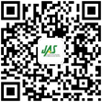2019, 6(1): 32-44.
doi: 10.1109/JAS.2019.1911318
Abstract:
We study a communication scheduling and remote estimation problem within a worst-case scenario that involves a strategic adversary. Specially, a remote sensing system consisting of a sensor, an encoder and a decoder is configured to observe, transmit, and recover a discrete time stochastic process. At each time step, the sensor makes an observation on the state variable of the stochastic process. The sensor is constrained by the number of transmissions over the time horizon, and thus it needs to decide whether to transmit its observation or not after making each measurement. If the sensor decides to transmit, it sends the observation to the encoder, who then encodes and transmits the observation to the decoder. Otherwise, the sensor and the encoder maintain silence. The decoder is required to generate a real-time estimate on the state variable. The sensor, the encoder, and the decoder collaborate to minimize the sum of the communication cost for the sensor, the encoding cost for the encoder, and the estimation error for the decoder. There is also a jammer interfering with the communication between the encoder and the decoder, by injecting an additive channel noise to the communication channel. The jammer is charged for the jamming power and is rewarded for the estimation error generated by the decoder, and it aims to minimize its net cost. We consider a feedback Stackelberg game with the sensor, the encoder, and the decoder as the composite leader, and the jammer as the follower. Under some technical assumptions, we obtain a feedback Stackelberg solution, which is threshold based for the scheduler, and piecewise affine for the encoder and the decoder. We also generate numerical results to demonstrate the performance of the remote sensing system under the feedback Stackelberg solution.
Xiaobin Gao, Emrah Akyol and Tamer Başar, "Communication Scheduling and Remote Estimation With Adversarial Intervention," IEEE/CAA J. Autom. Sinica, vol. 6, no. 1, pp. 32-44, Jan. 2019. doi: 10.1109/JAS.2019.1911318.


 E-mail Alert
E-mail Alert


